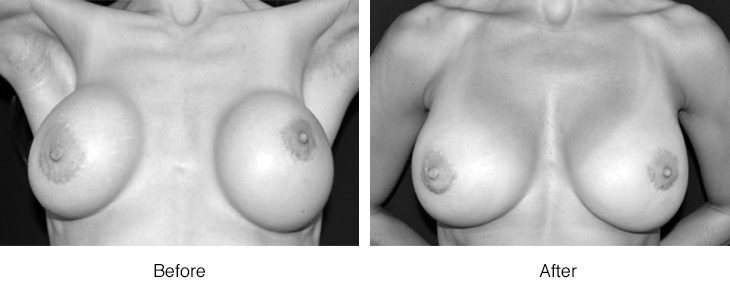Many women have a lot of worries about their labia and the appearance of their vulva, however when they reach out to The Cosmetic Gynecology Surgery Suite they aren’t always certain how to describe the area’s most bothersome to them.
While our experienced, well-trained, compassionate staff is always pleased to help provide you with knowledge and medical expertise; we encourage you to take a few minutes to learn the proper names for the Outside and Inside of the Vagina.
Anatomy of the Outer Vagina
The proper name for the outer genitals is the vulva (vuhl-vah). The vagina is only one part of these organs, and not the whole of them, and many people mistakenly call the vulva the vagina.
The Mons, Labia Majora, and Labia Minora
Where your pubic hair is, below your belly button, is a fatty area of tissue (skin) called the mons (mahns). Your pubic hair will move downward, as will that fatty tissue, around your labia majora (lay-bee-ah) or “outer lips.”
If you pull your outer labia open, you will see your labia minora, or “Inner lips”, which are not covered with hair, and look a bit like flower petals or small tongues. The size, length and color of the inner labia and other parts of the vulva will differ from person to person.
The labia may be long and thick, or barely visible, and may look purple, red, pink, blackish or brown, depending on your own coloring. All of these variations are absolutely normal, as are the labia being two different sizes or shapes. The purpose of your inner labia is pretty important; they have sensory nerve endings which contribute to sexual pleasure and also keep icky bacteria away from what is called the vestibule.
Anatomy of the Interior Vagina
Inner Labia and Clitoris
Looking at the vestibule, between those inner labia from the top down (right below your mons), you’ll first see the top of the inner labia, which create a little skin fold called the clitoral hood. That hood connects to the glans, which is the tip — and only the tip — of the clitoris (klit-or-iss). If you pull up the hood with your fingers, you can get a closer look.
The clitoris — which in full, internal and external, is nearly of the same size as the penis — is usually the most sensitive spot on, and involved in the most sensitive areas of, the vulva. It’s got twice the number of sensory nerve endings the penis does, and it also interacts with over 15,000 nerve endings throughout the whole pelvic area.
The clitoris (sometimes called the “clit” or the “spot”) is the primary source of most genital sensation. In fact, the only organ on the entire body that is solely for sexual arousal, and is attached to ligaments, muscles and veins that become filled with blood during arousal (when you get sexually excited) and contract during orgasm. The clitoris is internal as well as external — and the whole thing is a lot bigger than it looks from the outside — with legs, called crura, that are within the outer labia, as well as the clitoral (or vestibular) bulbs, which surround part of the lower portion of the vaginal canal.
Uretha, Hymen, and Vaginal Walls
Looking lower, you may be able to see another hood-like shape. Right below that shape is a teeny, tiny, barely visible little dot or slit, which is your urethra or urinary opening, where you urinate (or pee) from. Below that is the vaginal opening (sometimes people call it a “slit” or “hole”). You might notice how close the urinary opening is to the vaginal opening. Because of this, sometimes sexual activity can bring bacteria which infect the urinary opening, so it’s important during sexual activity to both empty your bladder before and after, to prevent infection.
Just barely inside the vaginal opening, you may see the vaginal corona, or hymen. Your corona may or may not be easily distinguishable from the rest of your vaginal opening, and that isn’t always because of sex. Long ago (and still sometimes today) it was thought that the corona/hymen was “evidence” of whether or not a woman had had sexual intercourse, but that is not the case at all. Not even all people with vulvas are born with intact or easily identifiable vaginal coronas.
Now, if you can slide your finger into your vaginal opening, and squeeze your vaginal walls (engaging what are commonly called PC — pubococcygeus — or Kegel muscles), just like you were trying to hold it in when you have to urinate, or when you’re trying to stop the flow of your urine. You can feel a lot of folds of skin and different textures, and see how the vagina (which is the passage between the vaginal opening and the cervix) can hold your fingers. That is the same way it holds a tampon, or a child during labor.
Potential Problems within the Anatomy of your Vagina
If you have a concern about the anatomy of your Vagina, we encourage you to reach out to our board certified surgeons and experienced medical staff to help address and correct potential problem areas.
At the Cosmetic Gynecology Surgery Suite, you will receive the attentive and superb personal care you deserve when you decide to have plastic surgery of the vaginal area such as vaginaplasty, hymenoplasty or labiaplasty. It is one of the very few such facilities where the top Board Certified Plastic Surgeons work with the very best Board Certified Gynecologists to provide a combined approach to the complex cosmetic and functional problems of labia, vagina and bladder. We welcome young women as well as menopausal and postmenopausal women.
Contact us to today to schedule a consultation at our Park Avenue Suite.


